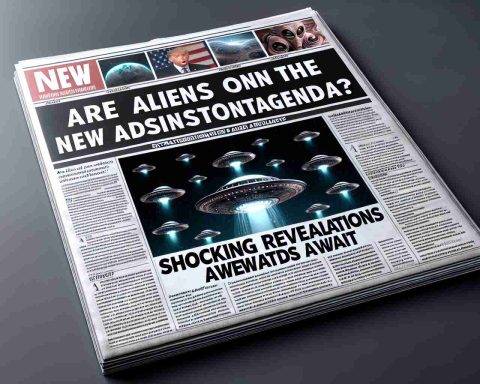Industry Insights
As the Brazilian competition authority dives into the complex evaluation of SES’s merger with Intelsat, a new landscape is emerging in the satellite capacity market. Numerous players are actively participating, indicating a fiercely competitive environment. The anticipation surrounding this merger is palpable, as it has the potential to reshape service offerings globally.
Data gathered from a recent market test revealed that many respondents believe the satellite capacity supply market is crowded with a multitude of competitors. This saturation suggests no single entity has the power to dominate, maintaining a balance that benefits service providers and consumers alike.
With SES and Intelsat looking to combine their resources, stakeholders are closely monitoring the implications this merger could have on pricing, innovation, and services within the sector. The Brazilian authority’s thorough analysis will help determine whether this union strengthens or disrupts competition.
The outcome of this review could signal significant shifts within the satellite industry, influencing future mergers and collaborations. As the situation unfolds, industry watchers and consumers will be keen to understand how this potential merger could redefine access to satellite services and the competitive dynamics at play. The next steps in this evaluation process will be crucial in determining the future trajectory of the company’s operations and the broader market landscape.
The Global Landscape of Satellite Capacity: Implications Beyond the Merger
The merger of SES and Intelsat is not just a pivotal moment for the companies involved; it holds broader significance for the global satellite market, society, and the economy. As competition intensifies, this merger could catalyze a new era of affordability and accessibility in satellite communications. Enhanced service offerings may emerge as companies innovate in response to competitive pressure, aligning with consumer demand for more efficient and reliable connectivity.
From a cultural standpoint, improved satellite services can bridge divides between urban and rural areas, fostering greater access to information and opportunities, which ultimately supports education and economic development worldwide. High-speed internet via satellites can play a crucial role in remote regions, ushering in a new wave of digital transformation.
Environmentally, the consolidation of resources could lead to improved sustainability practices in satellite operations. Larger entities may be better positioned to invest in cleaner technologies and reusable satellite designs, driving long-term efficiency and reducing the carbon footprint associated with space launches.
Looking ahead, the outcome of the Brazilian competition authority’s investigation will have significant implications, not just for SES and Intelsat but for future trends in mergers and alliances across the satellite industry. As the sector evolves, stakeholders must prioritize innovation, accessibility, and sustainability to remain competitive in an increasingly interconnected world.
The Future of Satellite Services: A Game-Changing Merger on the Horizon?
The Impact of the SES and Intelsat Merger Evaluation
As the Brazilian competition authority scrutinizes the merger between satellite giants SES and Intelsat, the satellite capacity market stands on the brink of significant transformation. This merger could facilitate unprecedented shifts in service offerings on a global scale.
# Market Dynamics
The satellite capacity market is characterized by a diverse and competitive landscape. Recent market analysis indicates that a saturation of players ensures no single entity can monopolize the sector. This competition drives innovation, enhancing service offerings and ensuring more competitive pricing for consumers. With multiple stakeholders vying for market share, stakeholders are left to ponder the implications of the SES-Intelsat merger.
# Potential Benefits and Risks
Pros:
– Enhanced Innovation: The merger could lead to joint research and development efforts, yielding innovative satellite technologies and improved services.
– Expanded Coverage: By pooling resources, SES and Intelsat may be able to offer broader geographic coverage and more robust service options.
Cons:
– Reduced Competition: A merger of this magnitude may lead to fewer primary competitors in the market, potentially impacting pricing structures negatively.
– Regulatory Challenges: The Brazilian competition authority’s thorough review highlights the potential for regulatory hurdles that could delay the merging process.
# Industry Insights and Trends
The ongoing evaluation has prompted various insights into future trends within the satellite industry. Experts predict that successful navigation of this merger could inspire other consolidation efforts among satellite service providers, potentially leading to a restructured market landscape.
Furthermore, advancements in satellite technology, such as low Earth orbit (LEO) satellites, are altering the competitive dynamics. These innovations may prompt traditional geostationary satellite operators to adapt their strategies to maintain competitiveness.
# Innovations and Sustainability
As the merger process unfolds, sustainability becomes a crucial consideration. Both companies have shown commitments to reducing the environmental impact of satellite operations through the adoption of greener technologies. The push for sustainability in the satellite sector is gaining traction, prompting companies to implement more efficient satellite designs.
# Potential Pricing Impact
The ultimate outcome of the SES and Intelsat merger could influence pricing in the satellite capacity market. If the merger is approved, analysts suggest that it may lead to competitive pricing strategies during the initial periods as the companies establish their integrated offerings. Conversely, if competition decreases significantly as a result of the merger, consumers might face higher prices long-term.
Conclusion and Future Considerations
The SES-Intelsat merger represents a pivotal moment for the satellite industry, with the potential to reshape competition and innovation within the market. Industry observers and consumers alike are keen to understand how this evaluation will impact the future of satellite services.
The subsequent evaluations by the Brazilian competition authority will play a critical role in determining the trajectory of this merger. Stakeholders should stay informed about the developments in this space, as it could bear significant consequences for satellite service delivery and market competition.
For more insights and industry updates, visit SES and Intelsat.




















